Asbestos in plaster is a concerning issue that many homeowners may not be aware of. In this article, we will explore what exactly asbestos is, how it is used in plaster, and the potential health risks associated with its presence.
We will discuss the signs of asbestos in plaster, how to identify it, and the importance of safely removing it. We will explore alternative options to asbestos in plaster and ways to prevent exposure. Stay informed and protect your health by learning more about this hidden danger.
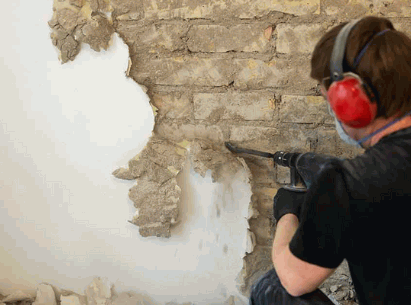
What Is Asbestos?
Asbestos is a hazardous material known for its fibrous nature and widespread use in construction.
The composition of asbestos consists of six naturally occurring silicate minerals, each comprising long, thin fibers that are resistant to heat and corrosion. Due to its durability and fire-resistant properties, asbestos has a long history in construction, dating back to ancient civilizations.
Over the years, asbestos has commonly been used in various building materials such as insulation, roofing, flooring, and piping, due to its affordability and effectiveness in enhancing fireproofing and soundproofing capabilities.
The health risks associated with exposure to asbestos fibers have been extensively documented, with inhalation of these microscopic fibers leading to serious respiratory diseases, including lung cancer, asbestosis, and mesothelioma.
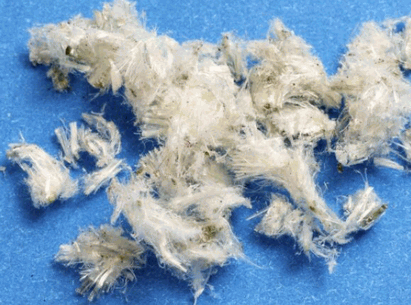
What Is Plaster?
Plaster is a versatile construction material commonly used for covering walls and ceilings.
It exhibits excellent adhesion properties, making it ideal for creating smooth and seamless surfaces. The application of plaster involves a skilled process that includes mixing the plaster with water to achieve the desired consistency before it is spread and smoothed onto the surface being worked on. Plaster can be used in various forms such as lime plaster, gypsum plaster, and cement plaster, each offering unique characteristics suitable for different applications in construction.
From creating interior finishes to repairing damaged walls, plaster plays a crucial role in enhancing aesthetics and structural integrity in buildings.
Learn more: What Is A Plastering Hawk

What Is Asbestos In Plaster?
Asbestos in plaster refers to the incorporation of asbestos fibers into the plaster mixture, posing significant health hazards.
This practice was common in the construction industry due to the desirable properties asbestos brought to plaster compositions, such as increased durability, fire resistance, and strength. The use of asbestos fibers helped enhance the overall performance of plaster, making it a popular choice for building materials.
As awareness of the dangers of asbestos exposure grew, regulations were implemented to restrict its use. The risks associated with asbestos-containing materials in construction include respiratory issues, lung cancer, and mesothelioma, emphasizing the importance of safe handling and removal practices.
How Is Asbestos Used In Plaster?
Asbestos is integrated into plaster during its formulation to enhance durability and fire resistance.
The addition of asbestos fibers to plaster mixtures plays a crucial role in improving the structural integrity and longevity of buildings. By creating a reinforced composite, asbestos aids in reducing the risk of cracks and fractures, especially in high-stress areas. Asbestos’s fire-retardant properties make it a valuable component in construction materials, offering enhanced protection against fire hazards.
Whilst asbestos contributes to stronger, more resilient structures, it is essential to address the associated health risks and safety precautions due to asbestos fibers’ potential to become airborne and pose respiratory dangers during handling and installation.
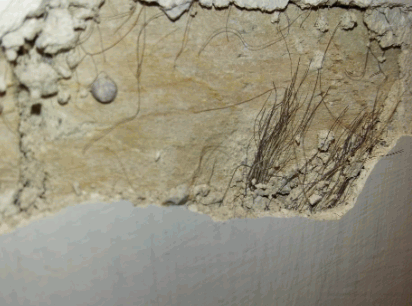
What Are The Signs Of Asbestos In Plaster?
Identifying asbestos in plaster can be determined through visual cues such as its appearance and texture.
One of the key visual indicators of asbestos-containing plaster is a unique fibrous texture, resembling a mesh-like pattern when viewed up close. Asbestos fibers embedded in the plaster can sometimes give it a speckled or granular appearance, differentiating it from regular smooth plaster surfaces. Asbestos-containing plaster may exhibit a yellow or brownish tint due to aging and exposure to elements. These distinct characteristics can assist in identifying potential asbestos hazards during visual inspections of plaster surfaces.
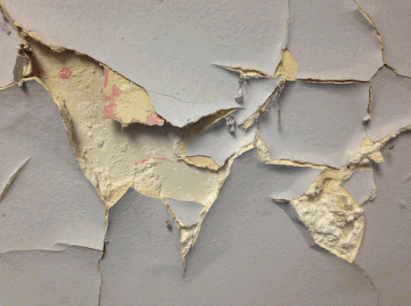
What Does Asbestos In Plaster Look Like?
Asbestos in plaster appears as fibrous white or grey material that may be visible upon visual inspection.
The fibrous texture of asbestos in plaster gives it a frayed, string-like appearance, resembling thin threads woven into the material. This unique texture sets it apart from regular plaster, making it stand out to keen observers.
The color variations in asbestos-containing plaster can range from pure white to light grey, sometimes showing hints of blue or green tones. These subtle hues can often hint at the presence of asbestos, especially when found in older structures where asbestos was commonly used for its fireproof properties.
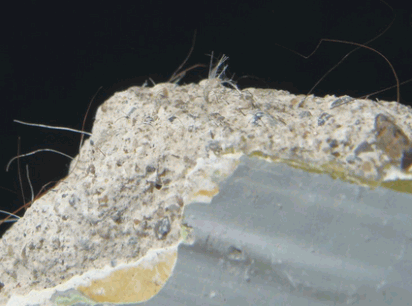
How Can You Identify Asbestos In Plaster?
Identifying asbestos in plaster involves conducting tests to detect the presence of harmful asbestos fibers.
Inspection for asbestos in plaster typically begins with a thorough visual assessment to look for signs of deterioration or damage that may release asbestos fibers into the air. Sampling techniques may include collecting bulk samples of plaster for laboratory analysis or utilizing air sampling devices to measure airborne asbestos levels. Professional inspectors trained in asbestos identification use specialized equipment and follow strict protocols to ensure accurate testing results. The presence of asbestos in plaster poses serious health risks, making it essential to seek professional assistance for safe and reliable detection.
Is Asbestos In Plaster Dangerous?
Asbestos in plaster poses a significant health risk due to its hazardous nature, especially when the material becomes friable.
When asbestos-containing plaster is disturbed or damaged, it can release tiny fibers into the air. These fibers are extremely dangerous when inhaled or ingested, as they can penetrate deep into the lungs and remain there for a long time. Prolonged exposure to asbestos fibers can lead to serious health conditions such as mesothelioma, lung cancer, and asbestosis.
The presence of friable asbestos materials in buildings, such as older plaster, can pose a direct health threat to occupants and workers if not properly managed or removed by trained professionals.
What Are The Health Risks Of Asbestos In Plaster?
Exposure to asbestos in plaster can lead to severe health risks, including respiratory diseases and lung conditions.
Inhaling asbestos fibers from plaster materials can cause a range of lung-related illnesses, such as asbestosis, lung cancer, and mesothelioma. These diseases often develop after prolonged exposure to asbestos, especially in occupational settings where workers may not have been adequately protected.
The long-term health effects of asbestos exposure can be devastating, as asbestos fibers can remain lodged in the lungs, leading to chronic respiratory issues and a heightened risk of developing serious health conditions later in life. It is essential to recognize and address the dangers of asbestos exposure to protect individuals from the associated health hazards.
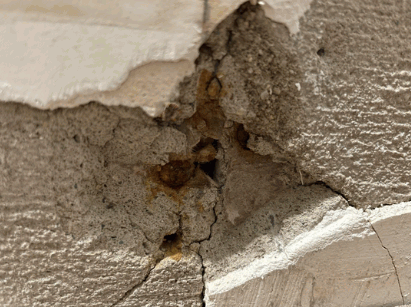
Can Asbestos In Plaster Cause Cancer?
Asbestos in plaster can indeed cause cancer, with mesothelioma being a prominent risk associated with asbestos exposure.
Mesothelioma is a type of cancer that affects the lining of various organs, and its primary cause is asbestos exposure. When asbestos fibers are disturbed, they can be inhaled or ingested, leading to long-term health issues. The harmful effects of asbestos can often take decades to manifest, making it challenging to pinpoint the exact source of exposure.
Asbestos-related cancers like mesothelioma are aggressive and difficult to treat, emphasizing the importance of early detection and prevention strategies to minimize the risks associated with asbestos-containing materials like plaster.
What Other Health Issues Can Asbestos In Plaster Cause?
Aside from cancer, asbestos in plaster can lead to various health issues, including respiratory symptoms and workplace exposure risks.
Exposure to asbestos in plaster can result in a range of respiratory illnesses such as asbestosis, mesothelioma, and lung cancer, posing severe health threats to individuals who come into contact with the material. These health problems are not limited to the physical effects but also extend to mental health concerns, as the fear of developing asbestos-related diseases may cause emotional distress. In addition to the health risks, workplace safety is a major issue, as inadequate precautions can lead to widespread asbestos exposure among workers, highlighting the importance of stringent occupational health regulations.
How Can You Remove Asbestos In Plaster Safely?
Safely removing asbestos in plaster requires professional abatement services to ensure proper handling and disposal.
Professional abatement services follow strict protocols to safeguard against the dangers of asbestos exposure during renovation projects. When dealing with asbestos-containing materials, it is crucial to hire trained professionals equipped with the necessary knowledge and protective gear. These experts carefully remove the asbestos, minimizing the risk of contamination and ensuring the safety of both occupants and workers. Proper disposal methods are essential to prevent the spread of asbestos fibers into the environment. By entrusting this task to experienced professionals, you can rest assured that the asbestos removal process will be carried out efficiently and in compliance with regulations.
What Are The Alternatives To Asbestos In Plaster?
Several alternatives exist to replace asbestos in plaster, including repair, encapsulation, and utilizing asbestos-free materials.
- Repair techniques involve carefully removing the sections of plaster containing asbestos and replacing them with non-asbestos materials.
- Encapsulation methods, on the other hand, utilize special coatings or wraps to seal in the asbestos fibers and prevent them from becoming airborne.
- Asbestos-free substitutes, such as gypsum board or cellulose-based materials, are increasingly popular in construction for their safety and effectiveness.
Each option has its own benefits and considerations, depending on the extent of asbestos contamination and the desired outcome for the plaster surface.
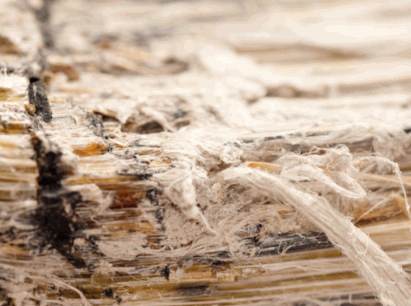
How Can You Prevent Exposure To Asbestos In Plaster?
Preventing exposure to asbestos in plaster involves following safety regulations, and guidelines, and using protective equipment.
This means that individuals working with or around plaster containing asbestos should ensure they are familiar with the specific safety protocols in place to minimize their risk. It is crucial to strictly adhere to guidelines for handling hazardous materials and to always use protective gear such as respirators, gloves, and suits when dealing with asbestos-containing materials. By prioritizing safety and taking these necessary precautions, individuals can significantly reduce their exposure to the harmful effects of asbestos.



